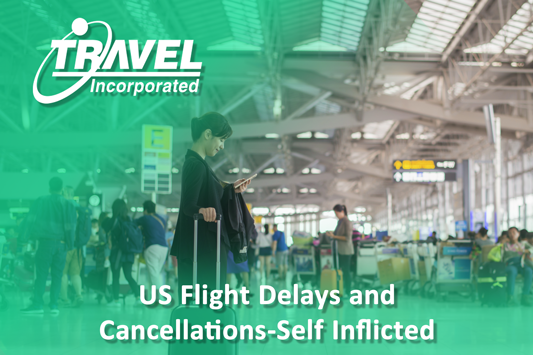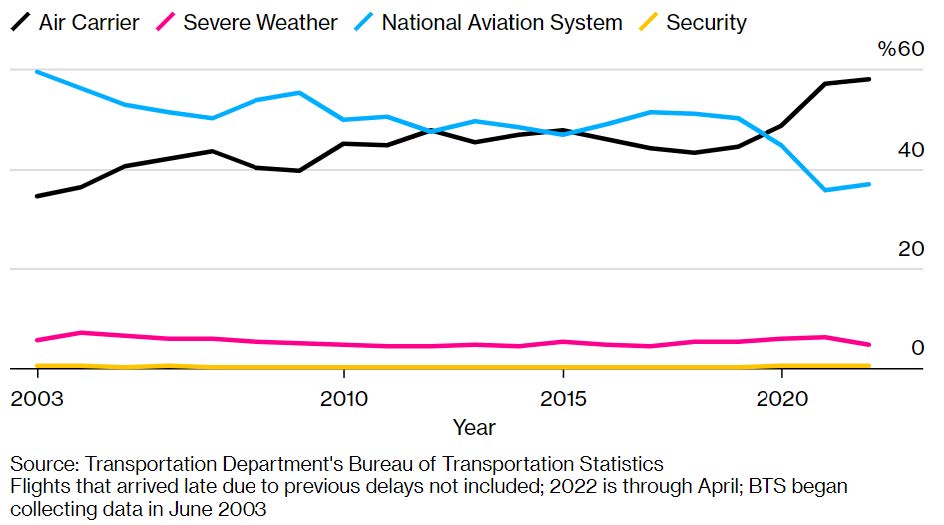US Flight Delays and Cancellations-Self Inflicted
(August 2022)
The past few months have been chaotic for business travelers with flight delays, last minute cancellations and significant reductions in routes impacting flights by the thousands, causing a sense of uncertainty and concern for most travelers.
Although significant heat and weather disturbances along with the occasional computer glitches have contributed to the challenges, the wave of delays and cancellations are being attributed as mostly ‘self-inflicted’ by the airlines, according to Bloomberg News with approximately 58% of flights impacted through April of this year.
“Our entire nation is still coming out of Covid and coping with Covid, and so there are plenty of challenges to go around,” “We all have issues. That’s why we need to work together and collaborate on solutions.”
-Sharon Pinkerton
SVP Airlines for America
Each of the major US carriers are taking steps to reduce the impact to travelers including trimming their summer schedules to reduce disruptions.
CAUSE OF DELAYS
What the airlines are saying.
CEOs of the largest airlines are speaking out to explain their perspectives, some taking ownership of staffing issues and some continuing to share the blame with FAA air-traffic facilities and even airport construction.
Delta Airlines
In this month’s quarterly earnings report, Ed Bastian stated they are experiencing a “training and experience bubble” and even with the increase in staffing, they are operating at 20% below its peak level. To put the situation in practical terms, in 2020, over 2,000 pilots accepted a voluntary retirement program to reduce the headcount during the pandemic. Today, Delta has recovered 95% of its staffing levels, with an additional 1,500 in training, or waiting to be trained. Bastian goes on to say “we’re going to have the capacity to grow when we’re ready, but we want to make sure we’re focused on serving what we have.”
United Airlines
In a July 6th announcement from United Airings Holdings Inc, the carrier blamed the FAA and the nation’s air traffic control system for ‘exacerbating the issues estimating more than 50% of its delay minutes and 75% of its cancellations in the past four months were because of FAA actions to manage air traffic and flight capacity. The FAA pushed back on United’s statement stating the impact was a combination of air traffic control staff levels and unrelated measures stemming from poor weather.
American Airlines
Compounding the challenges with staffing, American Airlines dealt with a computer glitch in early July. The airline reached agreements with the Airlines Pilots Association to triple pay during this time, and then to offer double pay for agreeing to work peak days, including holidays.
jetBlue Airways
Taking the decision to reduce routes by more than 10% this summer to avoid disruption and provide more reliable schedules, Jet Blue was the hardest hit with the worst performance among the large airlines. Almost 40% of the carriers’ flights were late through April and was responsible for nearly twice as many delays as all other causes combined. In spite of what JetBlue reported to the DOT, it insisted the bulk of disruptions were due to air-traffic and weather.





Leave a Reply
Want to join the discussion?Feel free to contribute!